Understanding Amortization In Accounting
Content
However, there is a key difference in amortization vs. depreciation. Only gadgets that have an identifiable financial life span can be amortized. Other intangible properties that have indefinite life spans are usually not amortized; however, they are evaluated for relevancy and risk.
- It organizes the payments, determining how much of each payment goes to principal and how much to interest.
- In most cases, when a loan is given, a series of fixed payments is established at the outset, and the individual who receives the loan is responsible for meeting each of the payments.
- APR and interest rates is that APR provides a more comprehensive look at how much you’ll pay when you take out a loan.
- Conceptually, the amortization of intangible assets is identical to the depreciation of fixed assets like PP&E, with the non-physical nature of intangible assets being the main distinction.
- Now my original loan amount was paid off they said quite a while ago and I owe them interest.
- ABZ successfully defended the patent but incurred legal fees of $50,000.
- The remaining amount is your principal repayment for the month.
As shown, the total payment for each period remains consistent at $1,113.27 while the interest payment decreases and the principal payment increases. Common amortizing loans include auto loans, home loans, and personal loans. Some of each payment goes towards interest costs and some goes toward your loan balance. Over time, you pay less in interest and more toward your balance. If you pay $1,000 of the principal every year, $1,000 of the loan has amortized each year. You should record $1,000 each year in your books as an amortization expense. As we explained in the introduction, amortization in accounting has two basic definitions, one of which is focused around assets and one of which is focused around loans.
Credit Resources
The lender uses a formula to set the payment amount based on loan total and interest rate. Each payment made is split up and applied partially to interest due and partially to principal. At the beginning of the loan, more of each payment goes to interest and less to the principal. Throughout the life of the loan, this slowly reverses, so at the end of the loan, the majority of the payment goes to principal and very little to interest. The payment you are quoted includes a sliding scale of interest vs. principal amounts within that payment, using amortization and an amortization schedule. If you take a $25,000 loan at 4% interest for 60 months, say, your payment quote might be around $460/month. The amortization schedule might show you that in the first month, $83 of that goes to interest, and $377 goes to principal.
Research & Development Amortization Changes – Tax Foundation
Research & Development Amortization Changes.
Posted: Thu, 29 Jul 2021 07:00:00 GMT [source]
Amortization refers to the reduction of a debt over time by paying the same amount each period, usually monthly. With amortization, the payment amount consists of both principal repayment and interest on the debt. As more principal is repaid, less interest is due on the principal balance. Over time, the interest portion of each monthly payment declines and the principal repayment portion increases.
Determine The Initial Cost Of The Patent
The item might not have any value once its lifespan is complete. For example, an office building can be used for many years before it becomes rundown and is sold. The cost of the building is spread out over the predicted life of the building, with a portion of the cost being expensed in each accounting year. Some assets, such as property that is abandoned or lost in a catastrophe, may continue to be carried among the firm’s assets until their extinction is achieved by gradual amortization. In application, the prices of acquiring a patent could be so small that they don’t meet or exceed an organization’s capitalization restriction. If that’s the case, consider these prices as expense is incurred. In many bigger firms with larger capitalization limits, patents are hardly ever recorded as property except when they’ve been bought from different entities.
Should we try to pay down our 5.5% loan asap or just except the situation and keep saving money in a 401K to maintain liquid assets or maybe a combination of the two? Any corporation that purchases or otherwise acquires intangible assets must answer the question of whether to amortize them. The company’s independent auditors then must evaluate those decisions. Interpreting Statement no. 142, however, may be difficult for intangibles with contractual or legal lives.
The dilemma is she still has 300,000 balance at 3.99% 30-year fixed rate and I think they refinanced years ago. The monthly payment is actually $1,700 total so it’s actually pretty good for L.A.
However, with checklist maids of queens you do get the added bonus of flexibility if you have a longer-term mortgage and making extra principal payments is simply voluntary. I should mention that mortgage rates are lower on shorter-duration home loans, so you may actually save more money by choosing a shorter loan term to begin with. If you have a 15-year fixed, but want to pay it down in 10 years, you can generally make a monthly payment about 1.5X and it’ll be paid off in 120 months instead of 180. If you’re really impatient and want to pay off the mortgage in five years, you basically have to make anywhere from 3.5-4X the monthly payment. That’s $6,604.93 in our example to pay it all off in 60 months. If you want to pay off the mortgage in just 10 years, the rule of thumb is to double your monthly mortgage payment.
Amortized Cost Vs Amortization
Mortgage experts predict what will happen to rates over the next week — and why. How much principal you owe on the mortgage at a specified date. Free Financial Modeling Guide A Complete Guide to Financial Modeling This resource is designed to be the best free guide to financial modeling!
- Knowing the total amount of interest you’ll pay over the lifetime of a loan is a good incentive to get you to make principal payments early.
- The difference between amortization and depreciation is that depreciation is used on tangible assets.
- To figure out what $200 extra would do per month you can plug in the numbers into an early payoff calculator.
- Since amortization doesn’t deal with physical assets, the process is no different for a home business than any other business that owns intangible property.
- In general, you should expense acquisition-related costs such as legal, investment banking and accounting fees.
- Whereas on thecash flow statement, these expenses are added back to net income in the operating section.
- The faster you pay the more you’ll save, but then that money is tied up in your home until your sell or cash out.
You say you’ve only had the existing loan for two years…so it doesn’t stretch out the amortization too long, 32 years versus 30. A breakeven calculator will allow you to determine when the savings would kick in…shouldn’t take too long if monthly payment is around $85 less and out-of-pocket cost is $1700. When it comes time to make your second monthly mortgage payment, interest is calculated on the new, lower balance. During the first half of a 30-year fixed-rate loan, most of the monthly payment goes to paying down interest, with very little principal actually paid off. These examples help us see some key differences between simple interest vs. amortization. For starters, with an amortizing loan, with each subsequent payment, you’ll pay more toward principal and less toward interest.
You can also calculate how much more you’ll need to pay every month to pay off your mortgage early, such as in 20 years rather than 30 years. Though many consumers base the affordability of a mortgage or a car loan on the monthly payment, the interest expense is a better way to assess the true cost of what you’re buying. In fact, lower monthly payments can actually mean you’re paying more in interest. To calculate your monthly payment, you’ll need to know the amount of your loan, the term of your loan and your interest rate. These three factors will determine how much your monthly payment is and how much interest you’ll pay on the loan in total. You make payments in regular installments of a set amount, though the ratio of interest to principal changes over the repayment period.
Those two numbers are the same because your deferred interest balance is $0, so any number plus zero will not change that number. It depends what your goal is…if you want to pay off the mortgage as fast as possible and you have extra cash that can be used to do that, you’ll save money on that 9% mortgage. The faster you pay the more you’ll save, but then that money is tied up in your home until your sell or cash out. You can also look into refinancing if it’s possible to lower the rate while also choosing a shorter loan term such as a 15-year fixed to pay it down even faster. Read around this site to get a better idea of your options and potential strategies. It depends what your goal is for the loan/home…do you plan to stay a long time or is there a possibility you’ll sell?
Secure The Right Loan With Assurance Financial
For example, different kinds of patents have various lifespans. A design patent has a 14-year lifespan from the date it is granted. A fixed asset is a long-term tangible asset that a firm owns and uses to produce income and is not expected to be used or sold within a year. Be aware that the research and design (R&D) prices required to develop the thought being patented cannot be included as part of the capitalized price of a patent.
The amortization method should reflect the pattern in which the company uses up the benefits the asset provides, with the straight-line method the default choice. Let’s see an example of a loan with a simple interest rate to understand how it differs from an amortizing loan. In our previous example of an amortizing loan, the simple interest rate was 10%, and the simple interest on the loan was $16,161.92. This information is educational, and is not an offer to sell or a solicitation of an offer to buy any security. This information is not a recommendation to buy, hold, or sell an investment or financial product, or take any action. This information is neither individualized nor a research report, and must not serve as the basis for any investment decision. All investments involve risk, including the possible loss of capital.
What Is An Auto Loan Amortization?
However, many intangible assets such as goodwill or certain brands may be deemed to have an indefinite useful life and are therefore not subject to amortization . In lending, amortization is the distribution of loan repayments into multiple cash flow installments, as determined by an amortization schedule.
The interest rate you are quoted when you take out your loan remains the same throughout the life of the loan . Information and interactive calculators are made available to you as self-help tools for your independent use and are not intended to provide investment advice. We cannot and do not guarantee their applicability or accuracy in regards to your individual circumstances. All examples are hypothetical and are for illustrative purposes. We encourage you to seek personalized advice from qualified professionals regarding all personal finance issues. We’re committed to helping you as you work toward financial success.
Understand Mortgage Amortization Schedule
We have two mortgages on the one property as we upgraded to a bigger forever family home 8 years ago and the “extra” went on an 02 mortgage rather than face penalties on breaking the 01. We want to fix one at 4.85% for three years and FLOAT the other at 6.24% but pay it off aggressively in the three years, then focus on getting rid of the other one.
The value of the asset on the balance sheet may be higher or lower than its fair value based on information about the contract. If a company determines that a previously unamortized asset has a finite useful life, what do you amortize the company should begin to amortize it from that point on. The last key difference is that amortizing loans tend to be longer-term loans, whereas simple interest loans are often short-term financing solutions.
I have made a LOT of extra principal payments, , which, other than the first year or so, I marked on my check what the amount of the extra principal paid, was. We refinanced our mortgage in May of 2004 for $115,000 at 5.85 interest rate for 30 years. I have been trying to pay extra just the last few months as my husband and I would like to retire but unfortunately cant because of the mortgage. If I continue to pay $200.00 extra a month any idea how many years that would knock off? Or would it be best to refinance for 30 years at a better interest rate so our payment is smaller and then my kids will have to have whats left of the balance after we are gone?
And the principal amount would change each month anyway as the loan is paid down, though a dramatic drop in principal signifies a new, higher interest rate. In all types of mortgages, are you (must you?) actually repay the entire amount borrowed?
The two cost-recovery options are depreciation and amortization. Under GAAP, for book purposes, any startup costs are expensed as part of the P&L; they are not capitalized into an intangible asset. Entrepreneurs often incur startup costs to organize a business before it begins operating.
How do you amortize something?
Subtract the residual value of the asset from its original value. Divide that number by the asset’s lifespan. The result is the amount you can amortize each year. If the asset has no residual value, simply divide the initial value by the lifespan.
I thought it would be best to hold funds in savings account as a safety net not knowing what the future could bring me. Yes, it’s probably based on the assumption that interest will accrue as time goes on sans payments of said interest. You’re likely an ideal candidate for a refinance because your rate is so high relative to today’s rates. In order to stay on track you’d probably want to switch to a 15-year fixed or 10-year fixed as you mentioned. Rates are closer to 3% today and you probably have a low LTV, another plus to getting a new loan rate. Not only is the term shorter, but the interest rate is lower too.



